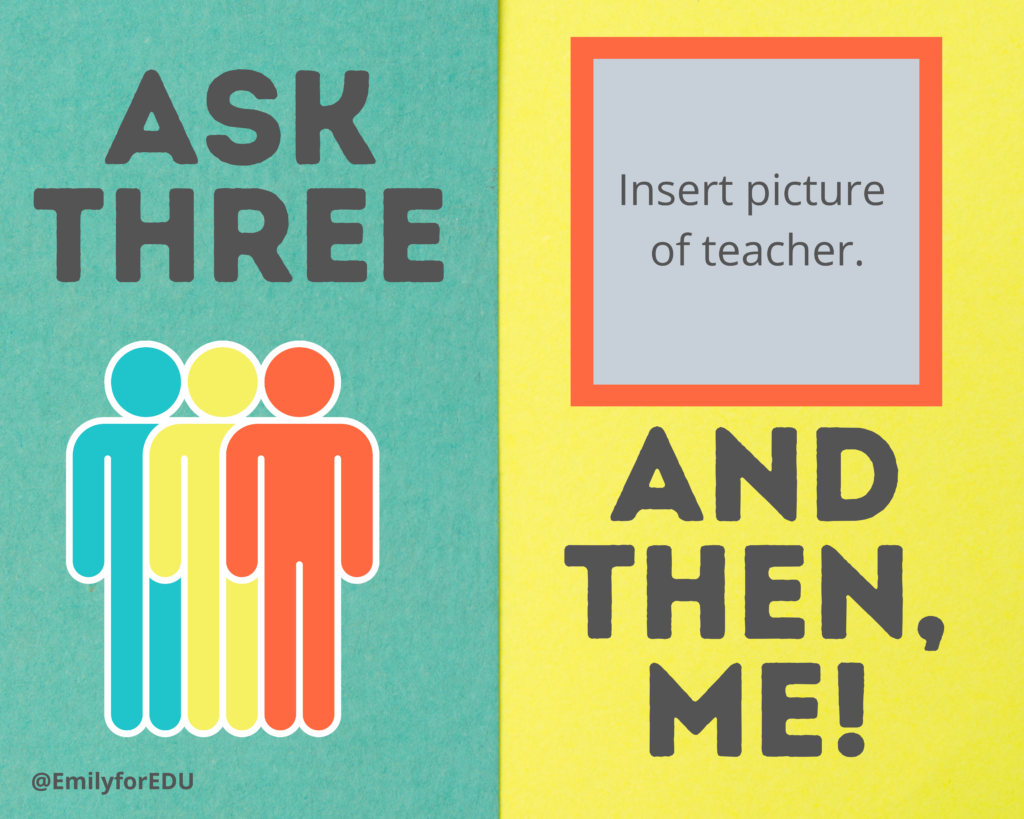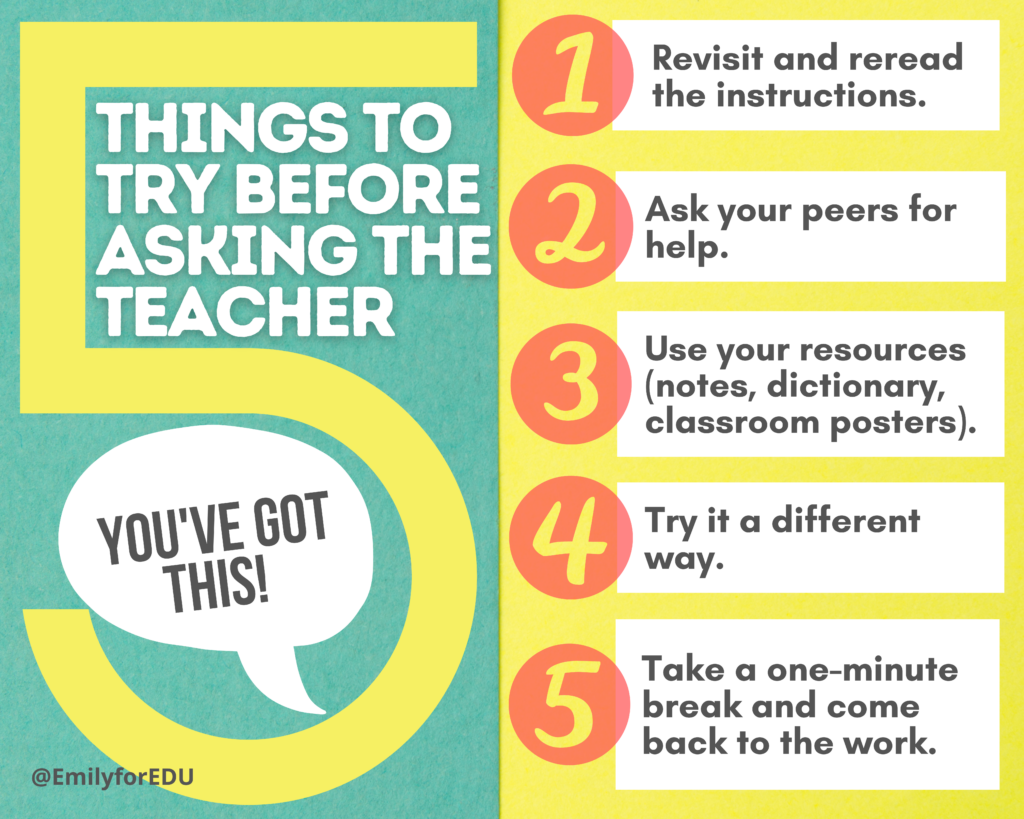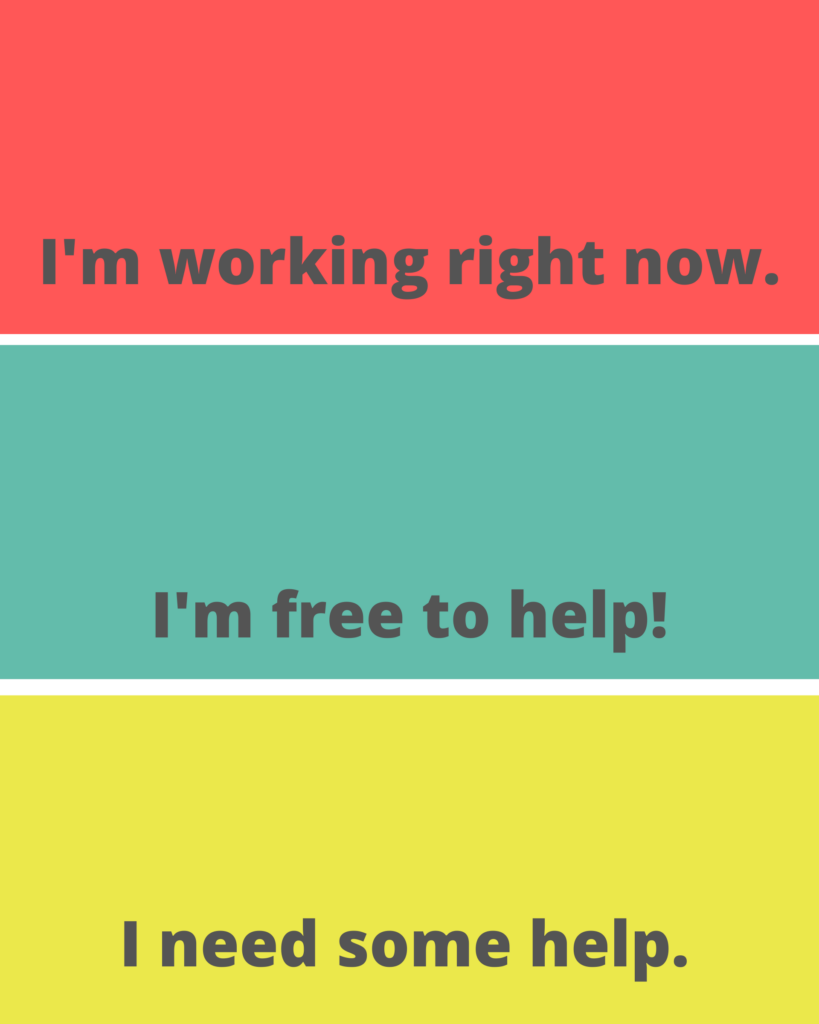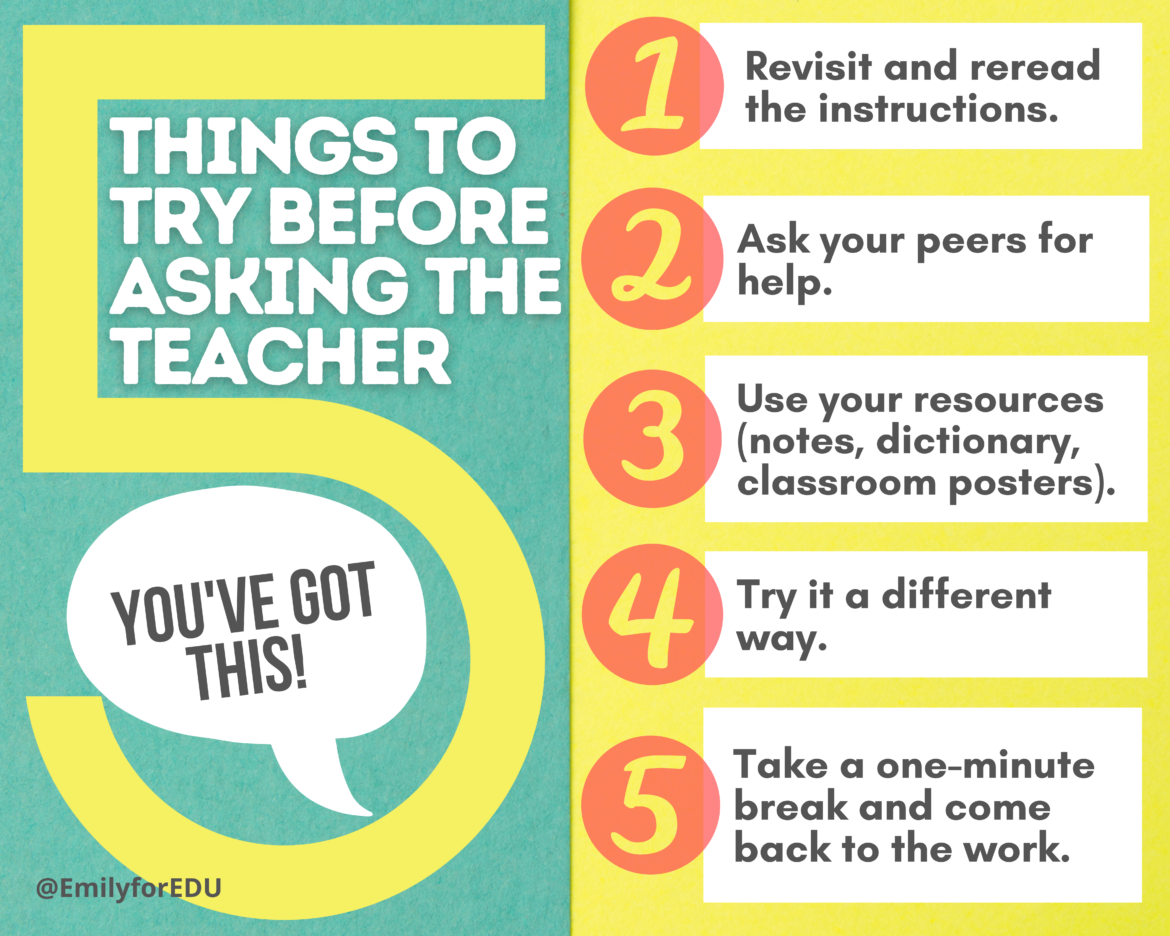We’ve all been in this situation. You know– the situation when we are running a small group or teaching a lesson or working individually with a student– only to be met with (wait for it…) interruptions. Note: To be clear, I’m definitely not talking about emergency situations when interruptions are 100% necessary. There are many reasons that students might interrupt, and some interruptions are important and necessary. But there are some that could be solved by the student with guidance from visual tools, class procedures, and their peers. Let’s take a look at strategies that can empower students to own their learning and problem solve before seeking help from the teacher. And they can also help build a great classroom community.
#1 “Ask Three and Then, Me!”
This is one of my favorites. It’s simple! Before asking the teacher, the student asks three different peers for help. If their question isn’t answered or the problem isn’t solved, the student seeks out the teacher. When a student comes to the teacher for help, the teacher asks, “Have you asked three?” If the student hasn’t yet, they know to seek out a peer. Most of the time, the problem is quickly solved after the first or second peer is asked for help. It’s a great strategy that also fosters a positive community within the classroom. And students know that the teacher will assist after they tried first with their peers.

#2 Start a Support Specialist Program
Creating a Support Specialist Program in a classroom can be amazing for students. It empowers them to help each other and can be a great reminder that everyone has strengths, weaknesses, and is a leader in their own way. And we all need help sometimes. Every student in the class can have the opportunity to “apply” to be a support specialist if they’d like to be one. After applying, they “interview” with the teacher. During the interview, you can ask students the following questions:
- Why do you want to be a support specialist?
- What gifts do feel you’d bring to your class as a support specialist?
- In what areas do you think you can best support your peers?
After applying and interviewing, students receive their Support Specialist certificates, which are displayed in the classroom. I find that this system and the fifth system on this list work very well together. Students really felt proud to be official support specialists and took the job seriously.
#3 Create a “Parking Lot”
You can use a digital tool like Padlet for this, but you can also use post-it notes. Designate a space in the classroom (it would be a whiteboard or poster board, for example) as the “parking lot”. Students can write down their activity-, content-, or assignment-related questions on post-its and then “park” them in the parking lot space. Then, once they’re available, the teacher or class support specialists, can address questions and provide assistance.
#4 Brainstorm Things to Try Before Asking the Teacher
This one is pretty self-explanatory, but here is a visual tool for students to help remind them of five things they can try (in any order) before asking the teacher:
- Revisit and reread the instructions.
- Ask peers for help.
- Use available resources (notes, dictionaries, clasroom posters, etc.).
- Try it a different way.
- Take a one-minute break and come back to the work.
You can brainstorm ideas for this list with your students and make your own classroom poster together!

#5 Student-to-Student Signaling
This procedure works well with any of the above. These cards can be laminated and given to students, or you can create your own with your class. There are many ways to display the cards, but I found that velcro on the desk and back of the cards works well. Students display the appropriate card on their desk to signal their peers, changing them as needed.
- A red card means that the student is unavailable. So they should not be visited for assistance.
- A green card means the student is available to assist others. So other students can come to ask them questions if needed.
- A yellow card signals that a student is in need of assistance. They’d like a classmate, when they’re available, to visit them.

I hope that you find some of these ideas helpful, or that something sparks an idea in you. If you have ways you empower students and transform interruptions in your classroom, please share them in the comments below.

